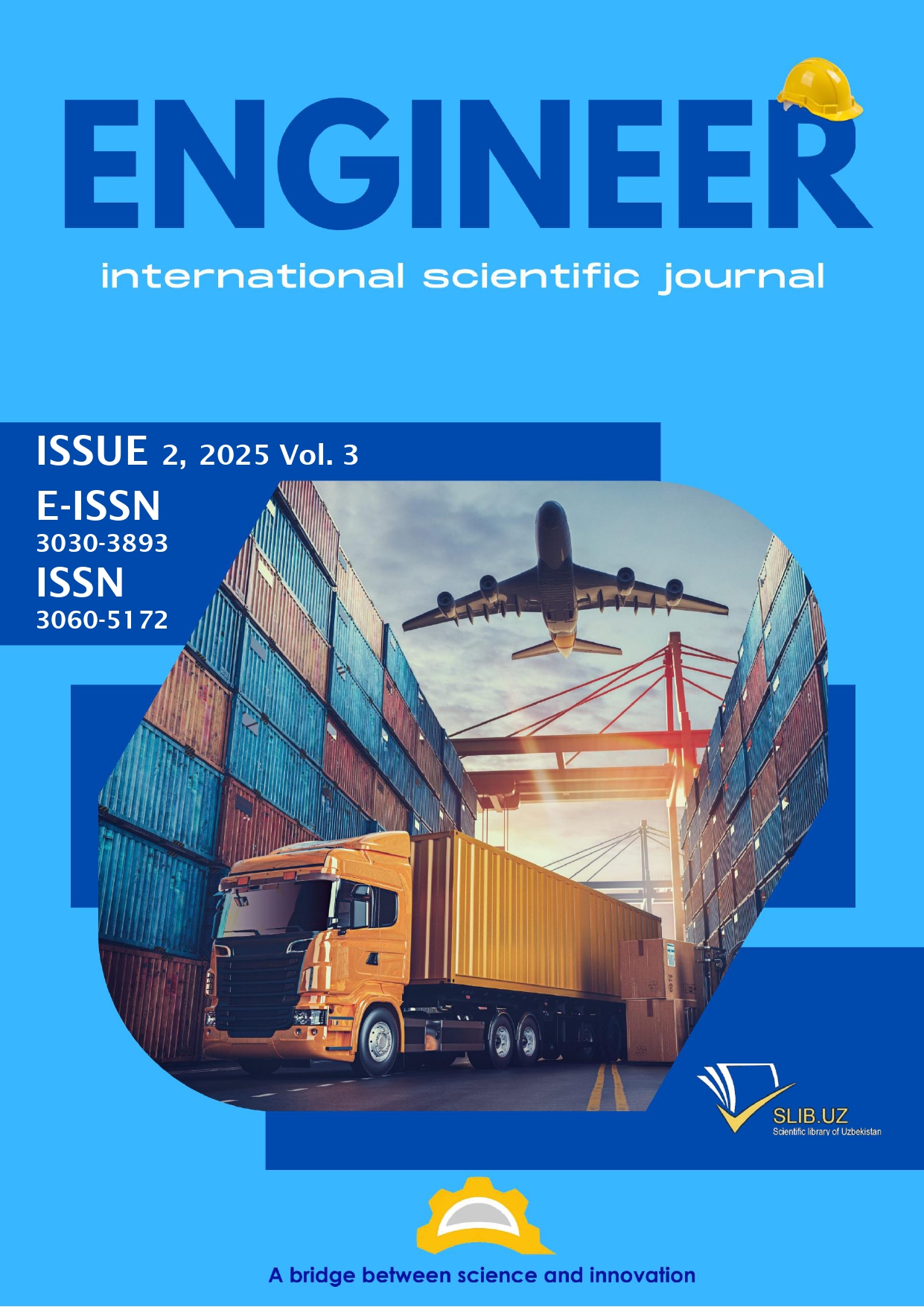Optimizing route loading by rationally allocating resources in the public transport system and meeting passenger demand
Аннотация
This article examines the issue of efficient distribution of 110 buses in the public transport system of the Republic of Karakalpakstan along five main routes. In order to rationally plan bus resources, a two-stage, simple calculation-based FRESET (Frequency Rationalization for Efficient Scheduling of Entire Transit) model was proposed. In the first stage of the model, the minimum number of buses sufficient to cover the daily passenger demand for each route was determined. In the second stage, the remaining excess buses were redistributed in proportion to the passenger flow and load level. According to the results of the study, 43 buses were distributed to five routes based on specific criteria, and the quality of service on some routes was significantly improved. In particular, the load level on routes such as R1 and R3 was optimized, waiting times were reduced, and overall balance was ensured. The proposed FRESET model is recommended as a practical, simple, and widely applicable solution for organizing regional transport networks.
Литература
[2] Мирзиёев, Ш.М. (2020). Транспорт ва логистика соҳасини ривожлантириш бўйича топшириқлар. // Ўзбекистон 24 телеканали ахборот дастури (15.10.2020)
[3] Саматов, Г. А. (1989). Региональный пассажирский автотранспорт: Организация, эффективность и перспективы работы. Фан.
[4] Абдуллаев Б.И., Абжалов А.М., Жамоат транспортида хизмат кўрсатиш сифатининг хавфсизлик параметрини баҳолаш мезонини такомиллаштириш//ТАЙИ хабарномаси – Тошкент, 2020/ - №2. б. 77-82
[5] Levinson, H. S. et al. (1973). Bus Use of Highways: Planning and Design Guidelines. NCHRP Report.
[6] Ceder, A., & Wilson, N.H.M. (1986). Bus network design. Transportation Research Part B, 20(4), 331–344.
[7] Ceder, A. (2007). Public Transit Planning and Operation: Theory, Modeling and Practice. Elsevier.
[8] Fan, W., & Machemehl, R.B. (2004). Optimal Transit Route Network Design Problem. University of Texas at Austin.
[9] Bashar, M.A., & Garcia, J. (2012). Simulation-based approach for bus allocation. Journal of Advanced Transportation.
[10] Transport Ministry of Uzbekistan (2023). Regional Transit Reports – Karakalpakstan.
[11] Wirasinghe, S.C., & Ghoneim, N. (1981). Spacing of bus stops. Transportation Planning and Technology, 6(2), 129–144.
[12] Daganzo, C. (2010). Structure of Transit Networks. UC Berkeley Working Paper.
[13] Hickman, M., & Wilson, N.H.M. (1995). Passenger travel time and path choice. Transportation Research Part B, 29(2), 115–130.
[14] Gentile, G., & Noekel, K. (2016). Modelling Public Transport Passenger Flows in the Era of Intelligent Transport Systems. Springer.
[15] Khani, A., & Shalaby, A. (2015). Transit network design using simulation-based optimization. Transportation Research Record.





